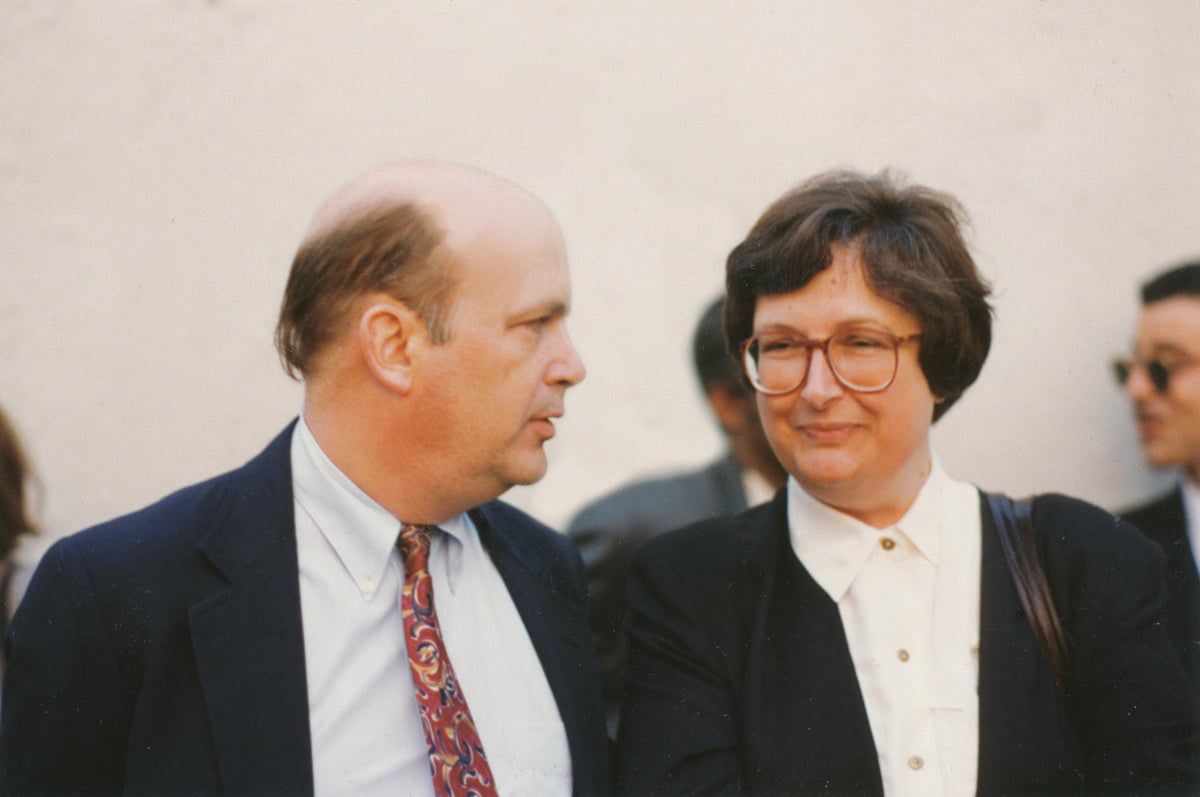
August 7, 2014
Looking Forward: What’s Next for Metropolis
Publisher and editor in chief Susan S. Szenasy remembers the endless curiosity of Horace Havemeyer III and the lessons
it provides for all of us moving forward.

Founder and publisher Havemeyer and editor-in-chief Szenasy at an event in the mid-1990s.
All photos courtesy Eugenie Havemeyer/Metropolis Archive
I was constantly fascinated by what caught Horace’s eye as he romped through his library of books on history, buildings, people, places, things—in fact anything that opened his mind to humanity’s enduring efforts to create a better world. He loved a great story beautifully told.
One of his favorite books was Jared Diamond’s Guns, Germs, and Steel: The Fates of Human Societies. Its beginnings are well documented, in writing and on film. It seems that Diamond, trained in the natural sciences, was doing fieldwork in Papua New Guinea where a local asked him, “Why is it that you white people developed so much cargo [read stuff], but we black people had little cargo of our own?” In other words, why had Europeans conquered so much of the world?
This question led Diamond on a 30-year quest that involved reading about geography, agriculture, anthropology, archeology, history of civilizations, climate, linguistics, technology, epidemiology, among other disciplines. For Horace, his own three-decade search focused on ways to create a lively dialog on the built environment as it interacts with the natural environment, and how this unity can benefit us all. Under his stewardship, Metropolis has shown that it’s possible to think broadly about design and culture, that substance can be entertaining, and that design at its best is never simply a styling exercise.
It’s now up to those of us he left behind to carry on Horace’s original mission and continue to refine and reinvent it as our culture evolves, our digital connectivity grows, a compromised environment demands our unflagging commitment to research and innovation, and our aging population presents new needs designers can no longer ignore. These stories matter more than ever.
Now and in the future, we will need to find ways to read broadly, explore endlessly, and connect the sum total of human knowledge with the design practice. We know that flipping through headlines on our many touch-sensitive devices leads to superficial data, not knowledge. We yearn to find ways to slow down and pay attention. Magazines and books can help us do that. These analog technologies can gather around them quiet, focused spaces where we can discover and celebrate our collective intelligence. This is what Horace looked for, and found, all his life. We continue that quest. And we promise to keep up with the growing need to tell stories that matter.
Recent Viewpoints
Viewpoints
Sustainability News Updates for Q2 2025





